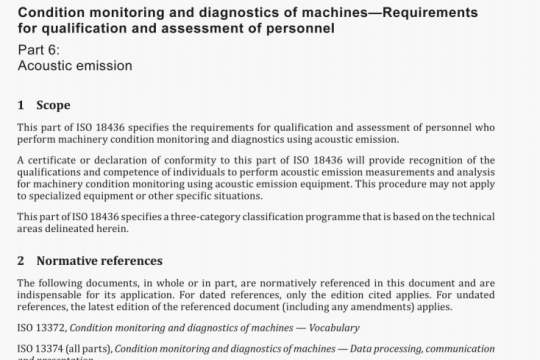ISO TS 17988:2014 pdf free
ISO TS 17988:2014 pdf free.Dentistry – Corrosion test methods for dental amalgam
For a dental amalgam alloy product supplied either as tablets or as a free-flowing powder in bulk, the ratio by mass of the dental amalgam alloy to the dental mercury should be that recommended by the manufacturer. Use a capsule (with a pestle, if needed) that complies with ISO 13897. Use any other mixing accessory that is required, as recommended by the manufacturer. If more than one mix is required to make the test-piece, produce these mixes simultaneously using equipment of the same type for each mix. However, if the last mix can be produced within the working time of the first mix, mixing these masses sequentially on a single piece of equipment is allowed.
For pre-capsulated products, use as many capsules as needed. Mix the contents of the capsules either simultaneously using the same number of pieces of equipment of the same type, or sequentially on a single piece of equipment. (The latter is allowed, provided the mixing of the last capsule is completed before the end of the working time of the first.) If necessary, use only a portion of the dental amalgam mix from one of these capsules.
Use an amalgamator that complies with ISO 7488 and that is recommended for mixing the amalgam alloy product with dental mercury or mixing the pre-capsulated product. Use the amalgamator setting and mixing time that is recommended by the manufacturer of the dental amalgam alloy or pre-capsulated product (for the mass of dental amalgam alloy that is being mixed).
Use a tubular gold-impregnated silica mercury vapour trap with a collection capacity of at least 50 mg mercury. To measure the mercury vapour it has collected, use a compatible atomic fluorescence mercury vapour analyser with a detection limit no greater than 1 ng and accuracy no worse than±1 ng. Before the trap is used all mercury from a previous recording must be discharged in accordance with the manufacturer’s instructions.
NOTE It is possible to collect mercury vapour on a mercury vapour trap operating remote and offline, after which the trap is sent [to determine of the amount collected) to an analytical laboratory company that possesses an appropriate atomic fluorescence spectrometer and offers a mercury vapour analytical service. If corrosion testing of amalgam is infrequent, this may offer an economic alternative to the purchase of the spectrometer. If this option is taken, a minimum of four such mercury vapour traps are required.ISO TS 17988 pdf download.




